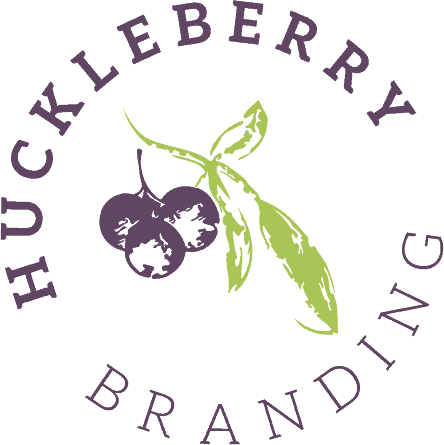Every day, I receive numerous unsolicited, cookie-cutter cold calls, email pitches and LinkedIn messages offering everything under the sun — from low-cost outsourced SEO, PPC or link-building services to the latest and greatest business software. Most of these unknown callers are screened*; however, there are rare occasions when these calls do get through. And when they do, my default reaction 9 times out of 10 is to become frustrated, irritated and regretful that I picked up the phone in the first place. Here are the main reasons why:
- The caller has interrupted my day
- The caller has a scripted, by-the-book speech that does not take into account my business’ distinct needs, goals or budget
- The caller is pushy or argumentative
- The caller is uninformed about the very product/service he or she is selling (or about competing products on the market)
- The caller is wasting my time
While I do understand that there are legitimate reasons for cold calling — and that there are sales professionals who do it well — most of the cold calls I receive nowadays know painfully little about our business or industry, my business, and even their own product or service. Often, I find that cold callers are mired in a “shove-our-product/service-down-your-throat-at-all-costs” mentality that is extremely off-putting.
While I may not recall the finer points of the caller’s argument about why I need a particular product or service, there is one thing I never forget: the name of the company that caused me such frustration.
Why Cold Calling May Be Hurting Your Brand Image
In my view, poor cold calling services are an indication of how a company runs its business.
- If a company uses loud, untrained or pushy outsourced call centers to make thousands of scripted sales calls every day, I imagine they do the same for their customer service support line.
- If a company uses pushy sales methods and simply runs down a list of cold contacts regardless of the customer’s needs, goals and budget, do they really have my best interests at heart?
- If a company resorts to this untailored, sales-en-masse method in the first place, perhaps its customer retention is low, has a poor reputation, and desperate for new customers.
True or not, these are the questions and negative connotations that arise in my short conversation with a cold caller, which ultimately culminates in a poor brand image from my perspective. One bad experience will put that business near the bottom of my list of companies I ever plan to use.
What’s an Alternative to Cold Calling?
I get it, cold calling and emailing is a proactive approach. It’s better than sitting around and waiting for sales to magically appear out of thin air. That said, I believe there are better ways to warm up a lead in advance, not only making the call more welcome to your prospect, but also qualifying the lead first so you’re not wasting your own time. Here are a few steps to consider taking before picking up the phone, thus warming up the prospect and turning what would be a cold call out of the blue into a warm, qualified and interested lead:
A Step-by- Step Guide to Inbound Marketing
Step 1: Create a Lead Magnet
Capture a prospect’s interest by creating and marketing lead magnets. Lead magnets can be anything from free trials or discounted services to valuable templates and other tools that address your customer’s most common concerns. Although these can take some time to put together, the effort is worthwhile in the long-run as an automated inbound lead generation source. A few tips to consider when creating your lead magnet:
- Make sure your lead magnet is valuable to your customer, such as addressing a common question or challenge your target audience faces.
- The lead magnet can be a PDF download (such as an ebook, template or checklist) or a free or discounted service or assessment.
- The goal of your lead magnet is to better understand your prospect’s needs to guide your next conversation.
Step 2: Create a Lead Magnet Landing Page
Create a basic landing page on your website promoting your lead magnet. Lock the lead magnet behind an email capture form that must be completed in order to “unlock” and receive the lead magnet.
- Ask for the least amount of information possible in your lead capture form, while still allowing you to vet the lead. The fewer form fields you require your prospect to complete, the more likely they are to complete it.
- Consider automating the lead capture and lead magnet delivery process using an email automation tool like Mailchimp.
Step 3: Market Your Lead Magnet
There are endless ways to advertise your lead magnet: on social media, through organic search engine optimization, in pay-per-click (PPC) advertising, by promoting it through your affiliate network or through guest blogs, and more. Think of every possible avenue you have at your disposal to promote your lead magnet and utilize it. A few tips to promote your lead magnet:
- Optimizing your landing page for specific keywords is an excellent way to drive regular leads in the long-run at a minimal cost.
- Cross-promote your lead magnet on relevant third-party websites or through affiliate networks.
Step 4: Follow-Up With Prospects
Once you have captured your prospect’s basic information, vet the lead to ensure he or she fits your ideal customer profile. Next, create a standardized follow-up process, such as a personalized email or phone call, to address the specific challenge your lead is experiencing. Based on the content of the download, you should also know what specific challenge your prospect is experiencing.
- A second point of contact, such as adding the lead to an ongoing email series or direct mailer list, can also be useful to stay top-of-mind without being overbearing.
- You should have a good understanding of at least one pain point your lead is experiencing based on the content of the lead magnet, prompting a relevant conversation.
Does Cold Calling Still Work?
I know some businesses successfully incorporate cold calling into their marketing and sales strategy, so I’m curious about a few things:
- In what cases would you decide to utilize a cold calling method for your business? (This is not a trick question or a “gotcha” tactic. I’m sure there are legitimate cases in which to do so.)
- How do you ensure cold calling doesn’t negatively impact your brand image?
- Are there any other preliminary steps you take before making a call or scripting an email to a cold lead that you’ve found useful?
Would love to hear your thoughts on this in the comments below.
*Fun Fact: According to a study by First Orion in Fortune Magazine, nearly 50% of all cell phone calls in 2019 will be scam calls. Ouch.


